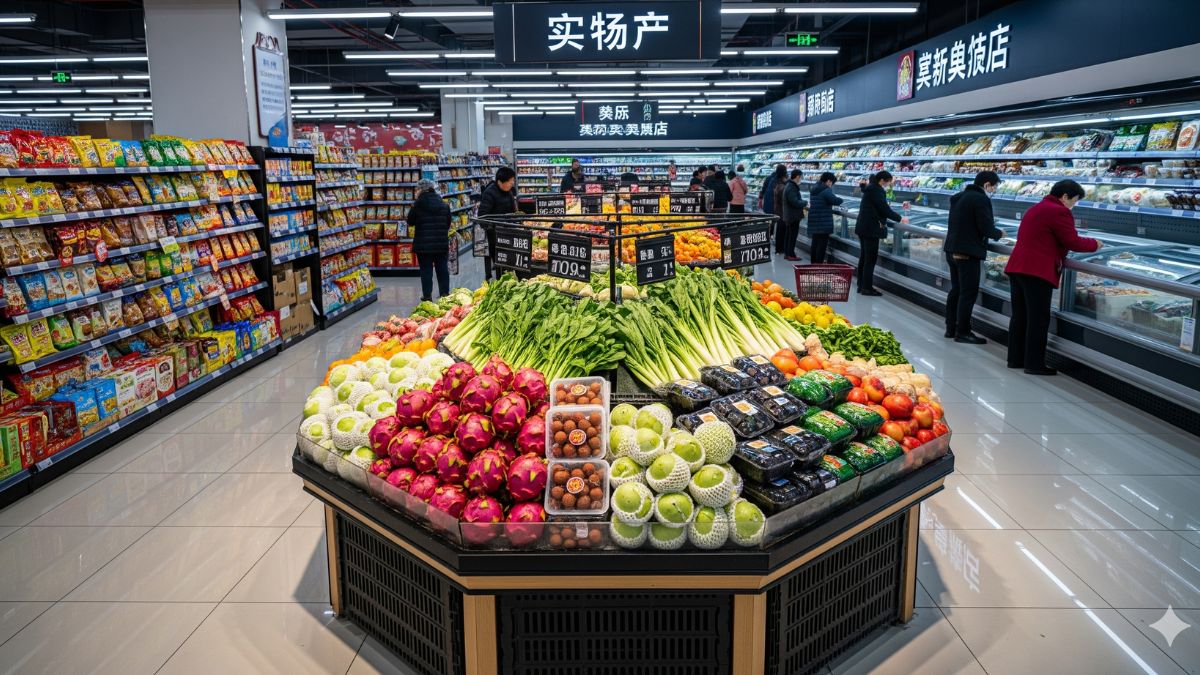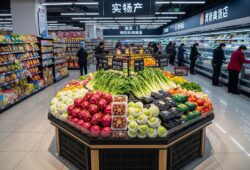
Retail in China has established itself as the most dynamic market on the planet. According to Statista data, retail sales of consumer goods reached 48.8 trillion yuan, equivalent to over 6.7 trillion U.S. dollars. Most of these sales occurred in urban areas, with 42.1 trillion yuan, while rural areas contributed 6.67 trillion.
This scale makes China the epicenter of global consumption and explains why international brands such as Walmart, Sam’s Club, and Costco are competing for consumer preference, while local giants rapidly expand their operations.
How much revenue do retail chains generate in China?
According to the Retail chains in China report (Statista, 2024), retail chains generated 4.26 trillion yuan in 2023. The number of establishments also grew significantly: in 2013, there were 204,000 stores, and by 2023, there were more than 398,000 points of sale.
This growth reflects how chain-store models have become dominant in the consumer offering, displacing small traditional shops and giving rise to a more organized and competitive ecosystem.
Which sectors account for the highest sales?
Chinese retail is diverse and segmented. In 2023, the top-performing sectors were:
- Automobile and fuel sales: 925 billion yuan.
- Pharmaceutical and medical products: 413 billion.
- Home appliances and electronics: 226 billion.
- Textiles and fashion: 211 billion.
- Food, beverages, and tobacco: 67 billion.
The broad range of categories shows that consumption in China spans from basic to aspirational, with strong momentum in health, technology, and lifestyle sectors.
Which store formats lead the retail sector in China?
Data shows that the most significant format is specialty stores, with 2.56 trillion yuan in sales in 2023. They are followed by supermarkets, which reached 735 billion, and exclusive brand stores, with 500 billion.
In contrast, department stores registered only 204 billion yuan in sales and are undergoing a decline in favor of more flexible and digital formats.
What role do Walmart, Sam’s Club, and Costco play in China?
International chains also have a prominent presence. Walmart, through its supermarkets and Sam’s Club, leads foreign expansion in China. In 2024, Sam’s Club operated 51 stores in top-tier cities, solidifying a premium membership model.
Meanwhile, Costco has 7 branches and maintains a more selective growth strategy, but with significant impact at each opening. Costco’s first store in Shanghai attracted thousands of customers during its launch, demonstrating the brand’s appeal among Chinese consumers.
The challenge for Walmart, Sam’s Club, and Costco lies in competing against innovative local chains like Hema (Alibaba), which merges physical supermarkets with digital platforms, and Yonghui, one of the country’s most influential supermarket chains.
What’s happening with supermarkets and hypermarkets in China?
While still a pillar of consumption, supermarkets are undergoing a restructuring process. The combined supermarket and hypermarket market exceeded 450 billion U.S. dollars in 2023, but it is trending downward due to the rise of e-commerce and convenience shopping.
The number of outlets dropped from 33,800 in 2013 to 26,600 in 2023, a decline that is forcing chains to rethink their strategy, focusing on private labels, memberships, and digitalization to remain competitive.
Why are convenience stores growing in China?
The big winner of the last decade has been the convenience store format. In 2023, they generated 424.8 billion yuan in sales, and projections show they will reach 617 billion by 2027.
Chains like Meiyijia, with nearly 38,000 locations, and Easy Joy (Sinopec), with over 28,000, lead a segment driven by urbanization, new lifestyles, and digitalization.
A revealing fact is that 89% of convenience store operators already integrate online and offline sales, making them pioneers in omnichannel strategies within Chinese retail.
What is the role of private label brands in Chinese retail?
Private label is making steady progress. In 2022, store brands represented 5% of sales in leading supermarkets, up from 3.2% in 2018. Although still far from Costco’s level in the U.S., where Kirkland Signature exceeds 25% market share, the growth in China points to a strong consolidation in the coming decade.
This shows that Chinese consumers are no longer only looking for well-known brands, but are also trusting retailer-led offerings—a trend that could radically transform the sector in the coming years.
What trends are shaping the future of retail in China?
The report data highlights four key trends:
- Omnichannel: digital integration is a must to compete.
- Membership clubs: Sam’s Club and Costco are strengthening this premium model.
- Technological innovation: more than 60% of department stores already use AI in their operations.
- Decline of traditional formats: department stores are losing relevance to specialty and convenience formats.










